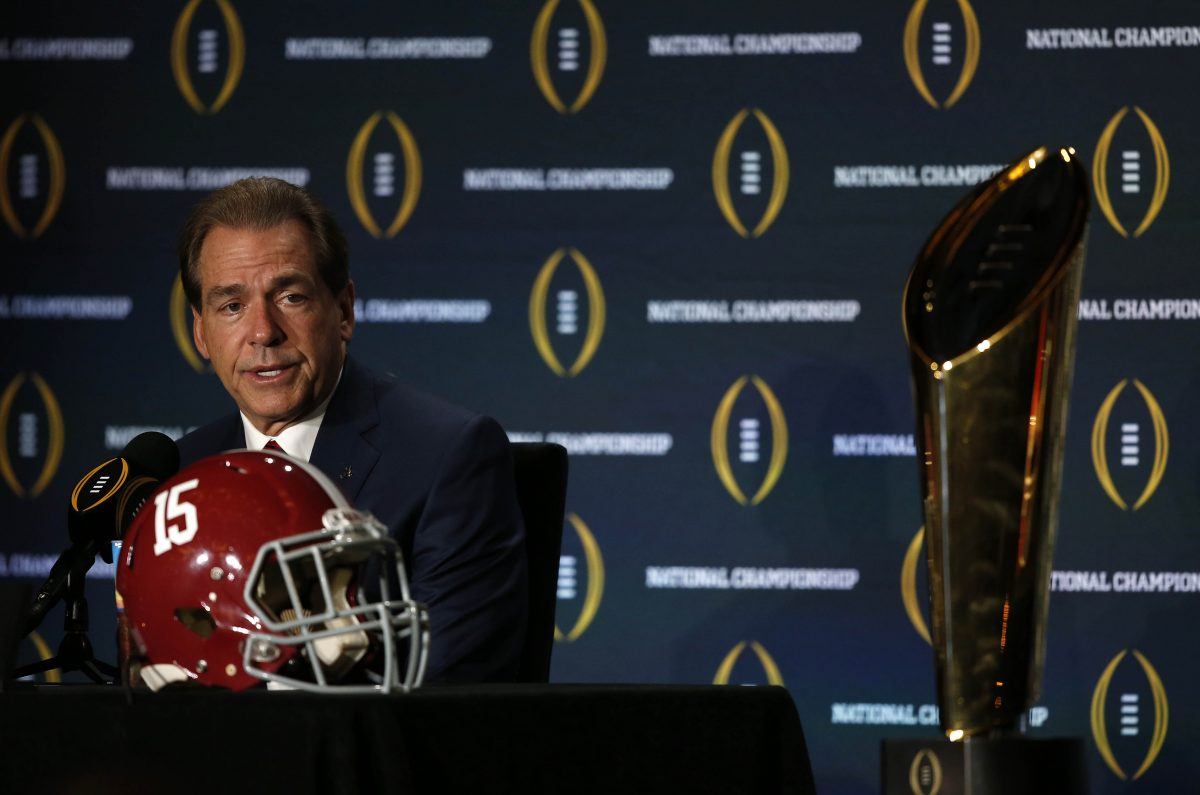The following is a special to Cyclone Fanatic written by Steve Deace.
— Four, 16-team super conferences. Each with 9-game conference schedules, divisional play, as well as a championship game.
— Playoff consists of the four winners of the super conferences, seeded by the playoff selection committee, unless a non-super conference team is ranked in the top four. In that case, they would replace the lowest ranked super conference champion.
— The playoff committee installs a transparent strength-of-schedule formula similar to the RPI in basketball, in order to give schools a barometer by which to schedule in a way that enhances their postseason positioning if they so choose.
— Playoff remains at four teams to avoid an extra week of games, practice, etc. at elite level, which only increases the risk of injury at a time NFL Draft preparation is just around the corner. Plus, that keeps a heavy emphasis on the regular season that benefits the sport.
— Playoff committee continues to select the so-called “New Year’s Six” games as well.
— All semifinal games are played either January 1st, or the final Saturday of the year if the 1st falls on a Sunday to conflict with the NFL.
— Similar to basketball, players are allowed to declare for the draft and return to school by March 7th following the NFL Combine if they don’t like their positioning and provided they didn’t sign with an agent.
— Players can transfer to any school in any conference they wish, and their current school can no longer fail to clear them to certain places. However, players must be willing to sit out a year in exchange for that accommodation.
— Should the head coach leave or be removed, players are allowed to transfer and be immediately eligible at a new school. Similarly, recruits should be allowed out of their LOIs as well.
— Players are allowed to lawfully market their own likeness and brand without risking their eligibility and/or amateur status. Players may even form a professional association to corporately manage the marketing of their individual likenesses/branding for merchandising such as video games, memorabilia, etc. should a specific vendor wish to use their specific identity above and beyond the individual school’s/NCAA’s licensing. This non-profit association would then disseminate those payments equitably among its members, as well as manage post-eligibility funds for injuries, healthcare, post-graduate skill/job training, etc.
— With more leniency towards player marketing comes a streamlined NCAA rulebook, but also harsher penalties. More freedom equals more responsibility. Gone are the days of straining a gnat to swallow a camel. Instead, enforcement will be focused on egregious attempts to circumvent the spirit of the rules as in multi-thousand payouts/benefits to recruits/players that give a school a competitive advantage. As well as dire consequences for sacrificing academic integrity for a competitive advantage, and failing to adequately hold players/team personnel accountable for criminal behavior that makes them a danger to the campus community. Also because doing so would provide a competitive advantage.
— The season begins for every team the final weekend in August for two reasons. This affords every team a chance to play at least one game before classes start to again conflict with school as little as possible. Also, it would allow a double bye-week scheduling policy for all schools. Further giving players time to rest and recover during the season, as well as stay current on their academics.
— Finally, the four 16-team super conferences would be constructed thusly:
Big Ten
EAST — Indiana, Maryland, Michigan, Michigan State, Ohio State, Penn State, Purdue, Rutgers
WEST — Illinois, Iowa, Iowa State, Minnesota, Nebraska, Northwestern, Texas, Wisconsin
SEC
EAST — Arkansas, Florida, Georgia, Kentucky, Missouri, South Carolina, Tennessee, Vanderbilt
WEST — Alabama, Auburn, LSU, Mississippi, Mississippi State, Oklahoma, Oklahoma State, Texas A&M
ACC
ATLANTIC — Boston College, Clemson, Florida State, Louisville, N.C. State, Notre Dame, Syracuse, Wake Forest
COASTAL — Duke, Georgia Tech, Miami, North Carolina, Pittsburgh, Virginia, Virginia Tech, West Virginia
PAC-16
NORTH — California, Colorado, Kansas, Oregon, Oregon State, Stanford, Washington, Washington State
SOUTH — Arizona, Arizona State, BYU, Baylor, TCU, UCLA, USC, Utah
The purpose of this final realignment is to protect as much geographic integrity as possible, while also giving each conference a major “win” in the reshuffling complete with a tradeoff.
The Big Ten lands its big prize in Texas, and as its tradeoff it takes fellow AAU member Iowa State over Kansas State. The Cyclones are the much more highly regarded academic institution. If the Big Ten were allowed to take Kansas instead the other conferences would likely balk. So in exchange for getting Texas, the Big Ten settles for its 16 member.
The SEC gets another big prize in Oklahoma, and takes little brother Oklahoma State along for the ride.
The ACC sticks the landing with Notre Dame and takes lesser regarded West Virginia as well for geographic integrity.
The PAC-16 raids the lone star state for Baylor and TCU, which are ranked among the top 100 universities in the country. Well ahead of Texas Tech, which is left behind, and BYU with its national following, strong academic ranking, and national following is also added. Plus, it’s a better fit now since it won’t be the lone private, religious school in the conference now. Kansas is brought in as a regional partner with Colorado and expands the conference footprint eastward.





